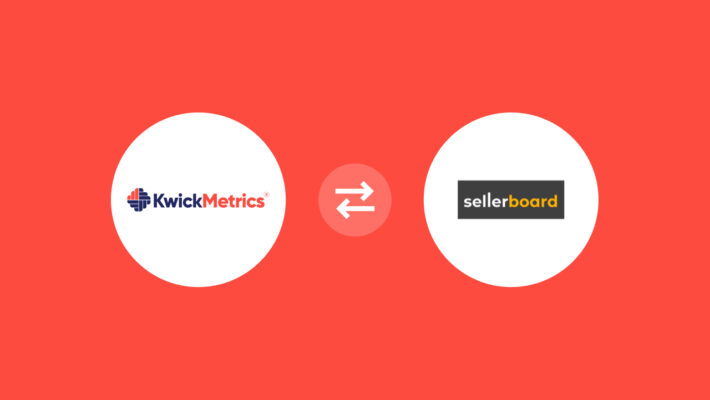5 Tips For Amazon Sellers To Choose The Right Analytics And Reporting Tool

Ever-evolving technological developments and innovations constantly change how the marketing ecosystem operates. Business intelligence tools enable companies to efficiently capture their goals and key performance indicators and optimize customer satisfaction.
To stay relevant in the competitive marketing landscape, the stakeholders must have readily available and accurate information at their disposal. Implementing effective reporting, analytics, and information delivery framework can help them easily access data and use it to drive proactive decision-making to improve your business bottom line.
Amazon is a highly competitive platform. As an Amazon seller, you must leverage the best analytics and reporting tool if you want to gain a competitive advantage. It will enable you to track Amazon product sales and performance and stay informed about your rivals. However, choosing the right tool can be daunting, considering that the market is overflowing with such devices. You need to make the right pick that integrates seamlessly into your platform and helps you fulfill your business objectives.
High-performing Amazon sellers understand the importance of selecting the best tools. The data quality you rely on will determine your business’s success by dictating the quality of actions you will take. The tool must effectively capture the KPIs like sales revenue, top performing products, return rate, sales trends, and repeat buyer rate. The other important KPIs are inventory performance, fulfillment performance, profit margin, customer retention, and conversion rates. The analytics and reporting tool must help you continuously monitor these metrics. Here are a few essential factors to help you make the right choice.
Business Objectives
The analytics and reporting tool must extend adequate support for your current and future business requirements. Based on your Amazon selling strategy, identify your core objectives and expected outcomes. Make SMART (Specific, Measurable, Achievable, Relevant, Time-bound) goals. Choose a tool that can help you access data and reporting features to achieve these measurable analytics goals. You can run a Proof of Concept (POC) to demonstrate the feasibility of the tool for your business.
Ever-evolving technological developments and innovations constantly change how the marketing ecosystem operates. Business intelligence tools enable companies to efficiently capture their goals and key performance indicators and optimize customer satisfaction.
To stay relevant in the competitive marketing landscape, the stakeholders must have readily available and accurate information at their disposal. Implementing effective reporting, analytics, and information delivery framework can help them easily access data and use it to drive proactive decision-making to improve your business bottom line.
Amazon is a highly competitive platform. As an Amazon seller, you must leverage the best analytics and reporting tool if you want to gain a competitive advantage. It will enable you to track Amazon product sales and performance and stay informed about your rivals. However, choosing the right tool can be daunting, considering that the market is overflowing with such devices. You need to make the right pick that integrates seamlessly into your platform and helps you fulfill your business objectives.
High-performing Amazon sellers understand the importance of selecting the best tools. The data quality you rely on will determine your business’s success by dictating the quality of actions you will take. The tool must effectively capture the KPIs like sales revenue, top performing products, return rate, sales trends, and repeat buyer rate. The other important KPIs are inventory performance, fulfillment performance, profit margin, customer retention, and conversion rates. The analytics and reporting tool must help you continuously monitor these metrics. Here are a few essential factors to help you make the right choice
Try our Amazon Analytics Tool with a 14-day Free Trial!
It only takes a few seconds to fill out the signup form and start trying out KwickMetrics.
Ever-evolving technological developments and innovations constantly change how the marketing ecosystem operates. Business intelligence tools enable companies to efficiently capture their goals and key performance indicators and optimize customer satisfaction.
To stay relevant in the competitive marketing landscape, the stakeholders must have readily available and accurate information at their disposal. Implementing effective reporting, analytics, and information delivery framework can help them easily access data and use it to drive proactive decision-making to improve your business bottom line.
Amazon is a highly competitive platform. As an Amazon seller, you must leverage the best analytics and reporting tool if you want to gain a competitive advantage. It will enable you to track Amazon product sales and performance and stay informed about your rivals. However, choosing the right tool can be daunting, considering that the market is overflowing with such devices. You need to make the right pick that integrates seamlessly into your platform and helps you fulfill your business objectives.
High-performing Amazon sellers understand the importance of selecting the best tools. The data quality you rely on will determine your business’s success by dictating the quality of actions you will take. The tool must effectively capture the KPIs like sales revenue, top performing products, return rate, sales trends, and repeat buyer rate. The other important KPIs are inventory performance, fulfillment performance, profit margin, customer retention, and conversion rates. The analytics and reporting tool must help you continuously monitor these metrics. Here are a few essential factors to help you make the right choice.
Business Objectives
The analytics and reporting tool must extend adequate support for your current and future business requirements. Based on your Amazon selling strategy, identify your core objectives and expected outcomes. Make SMART (Specific, Measurable, Achievable, Relevant, Time-bound) goals. Choose a tool that can help you access data and reporting features to achieve these measurable analytics goals. You can run a Proof of Concept (POC) to demonstrate the feasibility of the tool for your business.
User Interface (UI)
The tool must support an easy-to-use and effective UI. It must also be accessible to users who are not very technically proficient. They should be able to create and understand the dashboards and reports.
Pricing
Look into the pricing policy of the tool. Do not simply consider the upfront costs, but also assess the human resources it will require and the associated maintenance costs. Consider how the pricing structure incorporates the fees for subscription, growth, uptime, and maintenance. Ask your vendor to provide comprehensive details into this.
Integration
You must decide if you want to onboard a standalone or integrated solution. Accordingly, you need to define how the tool will integrate into your business platform to provide the solution you require.
Security
Evaluate the embedded security features in the analytics and reporting tool. The tool will access sensitive data, which, if not protected, can be accessed by bad actors for malicious purposes. The tool must adopt standard security controls and procedures across all levels, i.e., process level, system level, and data level. It will enable you to exercise better control over the data that the tool can access.
To Conclude
Keeping a tab on these tips can help you choose reliable and effective Amazon analytics and reporting tool to inform your Amazon strategy.



